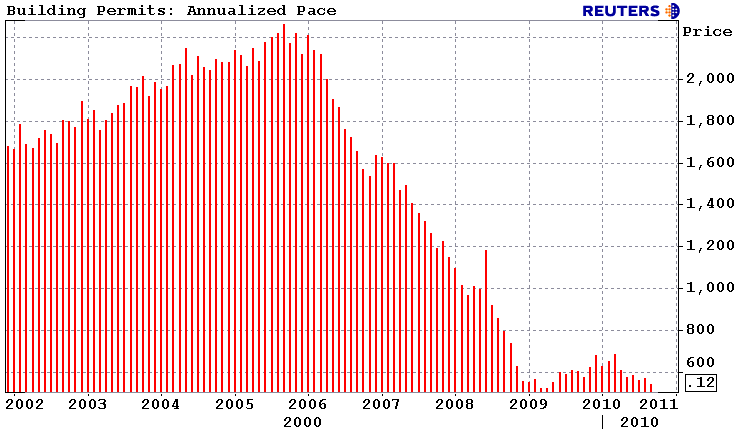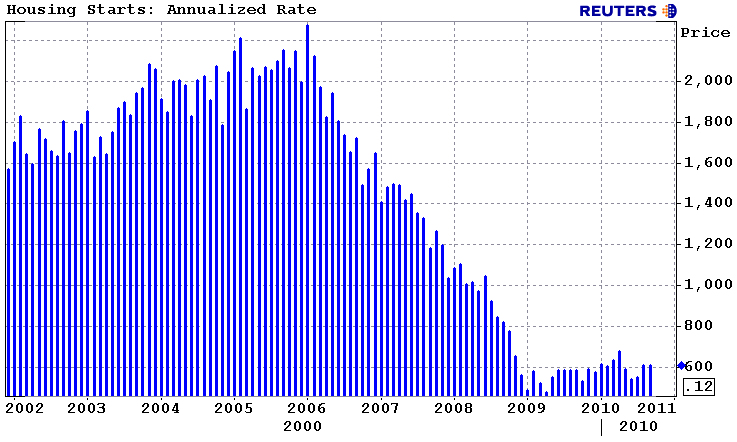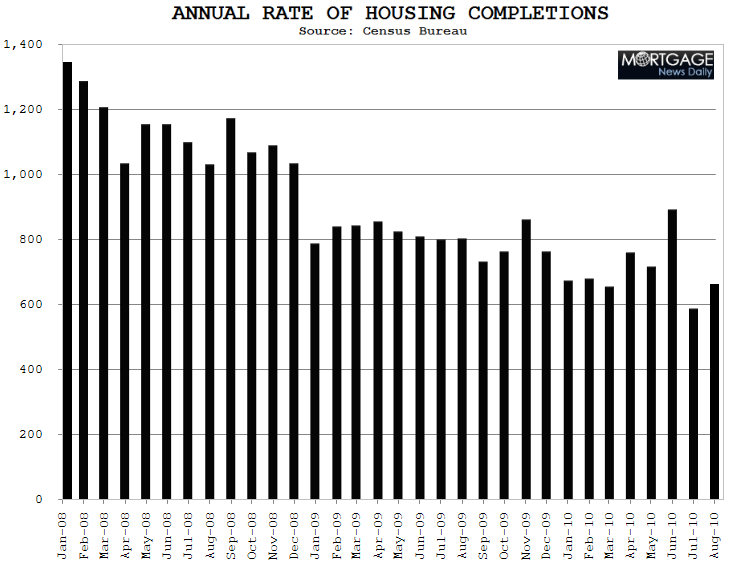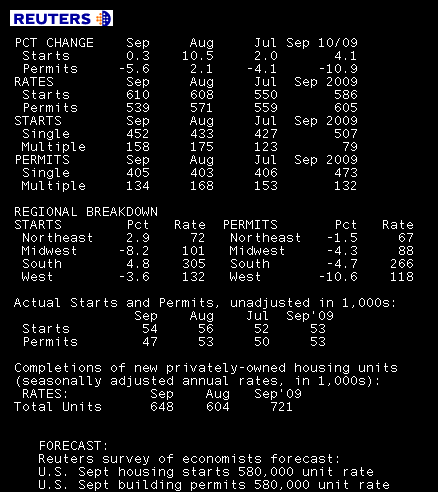Blog

Housing Starts +0.3%. Building Permits -5.6%. Completions +7.3%
The U.S. Census Bureau and the Department of Housing and Urban Development have released New Residential Construction statistics for September 2010.</p
Housing Starts data estimates how much new residential real estate construction occurred in the previous month. New construction means digging has begun. Adding rooms or renovating old ones does not count, the builder must be constructing a new home (can be on old foundation ifrn re-building). Although the report offers up single family housing, 2-4 unit housing, and 5 unit and above housing data, single family housing is by far the most important as it accounts for 70-80% of total home building.
Building Permits data provides an estimate on the number of homes planning on being built. This indicator basically tracksrn how much future construction activity we should expect to take place inrn the future. This data is a part of Conference Board’s Index of Leading Economic Indicators.</p
Excerpts from the Release…</p
BUILDING PERMITS
Privately-owned housing units authorized by building permits in September were at a seasonally adjusted annual rate of 539,000. This is 5.6 percent (±1.4%) below the revised August rate of 571,000 and is 10.9 percent (±2.3%) below the September 2009 estimate of 605,000.</p
Single-family authorizations in September were at a rate of 405,000; this is 0.5 percent (±1.3%)* above the revised August figure of 403,000. Authorizations of units in buildings with five units or more were at a rate of 111,000 in September.</p

</p
HOUSING STARTS
Privately-owned housing starts in September were at a seasonally adjusted annual rate of 610,000. This is 0.3 percent (±10.3%)* above the revised August estimate of 608,000 and is 4.1 percent (±12.0%)* above the September 2009 rate of 586,000.</p
Single-family housing starts in September were at a rate of 452,000; this is 4.4 percent (±13.9%)* above the revised August figure of 433,000. The September rate for units in buildings with five units or more was 150,000.</p

</p
HOUSING COMPLETIONS
Privately-owned housing completions in September were at a seasonally adjusted annual rate of 648,000. This is 7.3 percent (±14.3%)*above the revised August estimate of 604,000, but is 10.1 percent (±13.6%)* below the September 2009 rate of 721,000.</p
Single-family housing completions in September were at a rate of 501,000; this is 4.8 percent (±14.2%)* above the revised August rate of 478,000. The September rate for units in buildings with five units or more was 138,000.</p
 </p
</p
Plain and Simple: Housing Starts were much better than expected but failed to match the August improvement. Housing Permits failed to match the August uptick and were also much worse than expected.
Lookingrn deeper into the report….The modest improvement in housing starts was led by a 19,000 unit increase in single family homes, multifamily unit starts were down 17,000 annualized units. Weakness in building permits data was also focused in the multifamily sector. Single family permits rose by 2,000 annualized units while multifamily permits fell by 34,000 annualized units.</p
 </p
</p
</p
All Content Copyright © 2003 – 2009 Brown House Media, Inc. All Rights Reserved.nReproduction in any form without permission of MortgageNewsDaily.com is prohibited.
Latest Articles
By John Gittelsohn August 24, 2020, 4:00 AM PDT Some of the largest real estate investors are walking away from Read More...
Late-Stage Delinquencies are SurgingAug 21 2020, 11:59AM Like the report from Black Knight earlier today, the second quarter National Delinquency Survey from the Read More...
Published by the Federal Reserve Bank of San FranciscoIt was recently published by the Federal Reserve Bank of San Francisco, which is about as official as you can Read More...

Comments
Leave a Comment